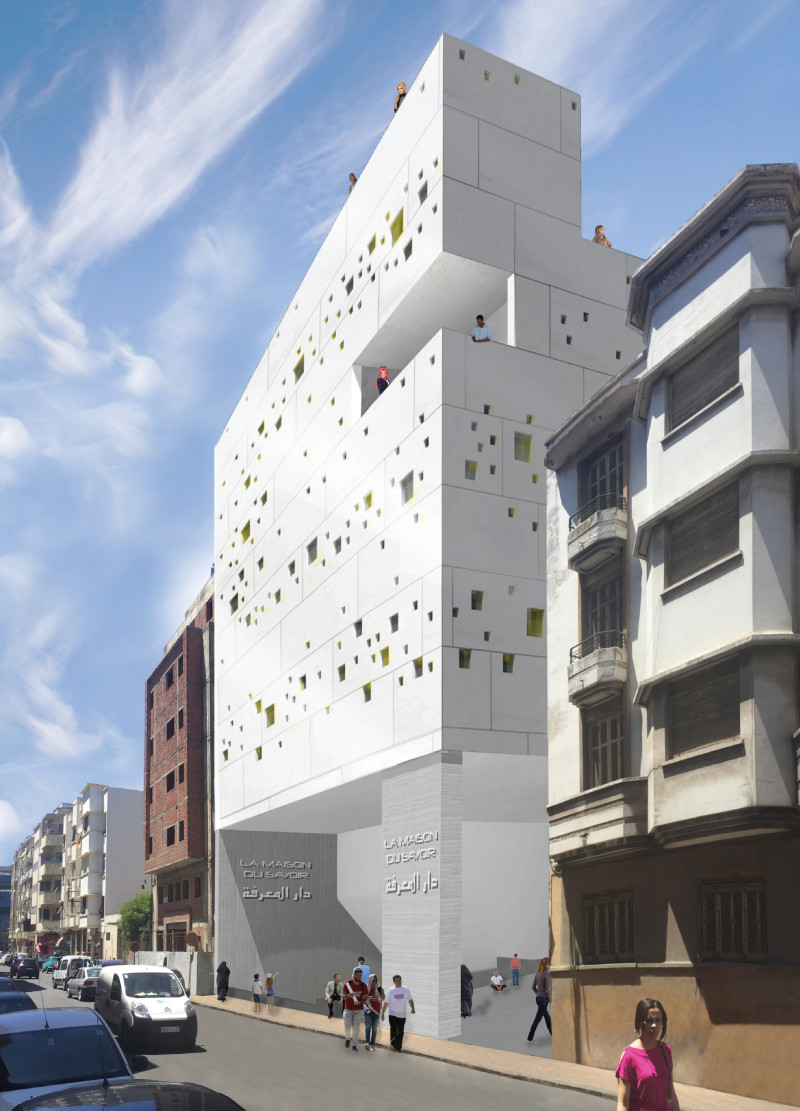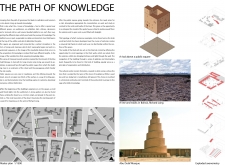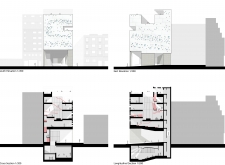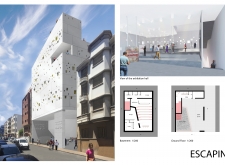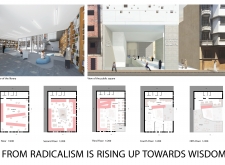5 key facts about this project
## Analytical Report: The Path of Knowledge Project
### Overview
Located in Casablanca, Morocco, the cultural center known as "The Path of Knowledge" serves as a hub for community engagement and educational pursuits. The design integrates traditional architectural elements with contemporary features, creating a space that encourages social interaction and the sharing of knowledge. Positioned at a strategic urban intersection, the project occupies a significant footprint that prioritizes public accessibility and participation.
### Spatial Organization
The building's layout centers on a prism-like form, with a public square at its base designed to facilitate gatherings and activate the surrounding area. This square serves as a communal gathering space, establishing connections among residents and promoting a sense of belonging. The vertical orientation of the structure, inspired by historical landmarks such as the Abu Dulaf Mosque, illustrates the journey of knowledge acquisition through its multi-level arrangement and distinctive spatial hierarchy.
#### Materiality and Sustainability
The architectural composition employs a selection of materials thoughtfully chosen for aesthetic and functional performance. The primary facade material, white Corian, provides a modern, reflective surface that symbolizes clarity. Concrete contributes structural stability, while glass is used for optimal daylighting, enhancing visual connections between indoor and outdoor environments. The design incorporates sustainability measures through natural ventilation and passive heating and cooling strategies, effectively reducing reliance on artificial systems.
The flexible internal layout allows for the reconfiguration of spaces as community needs evolve, reinforcing the project’s long-term relevance and adaptability. Key areas include an auditorium, a library promoting literacy, and an exhibition hall for cultural exchange, all contributing to an environment conducive to learning and community enrichment.


